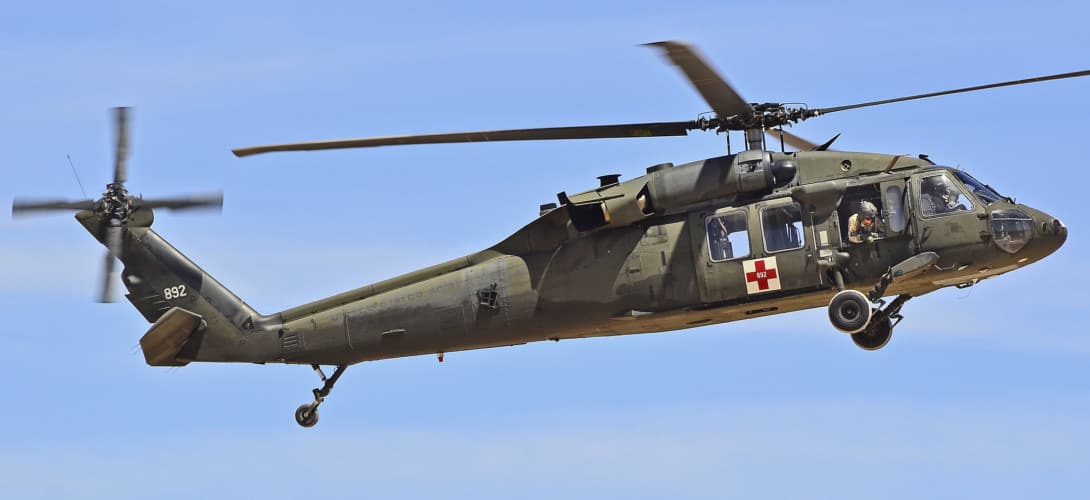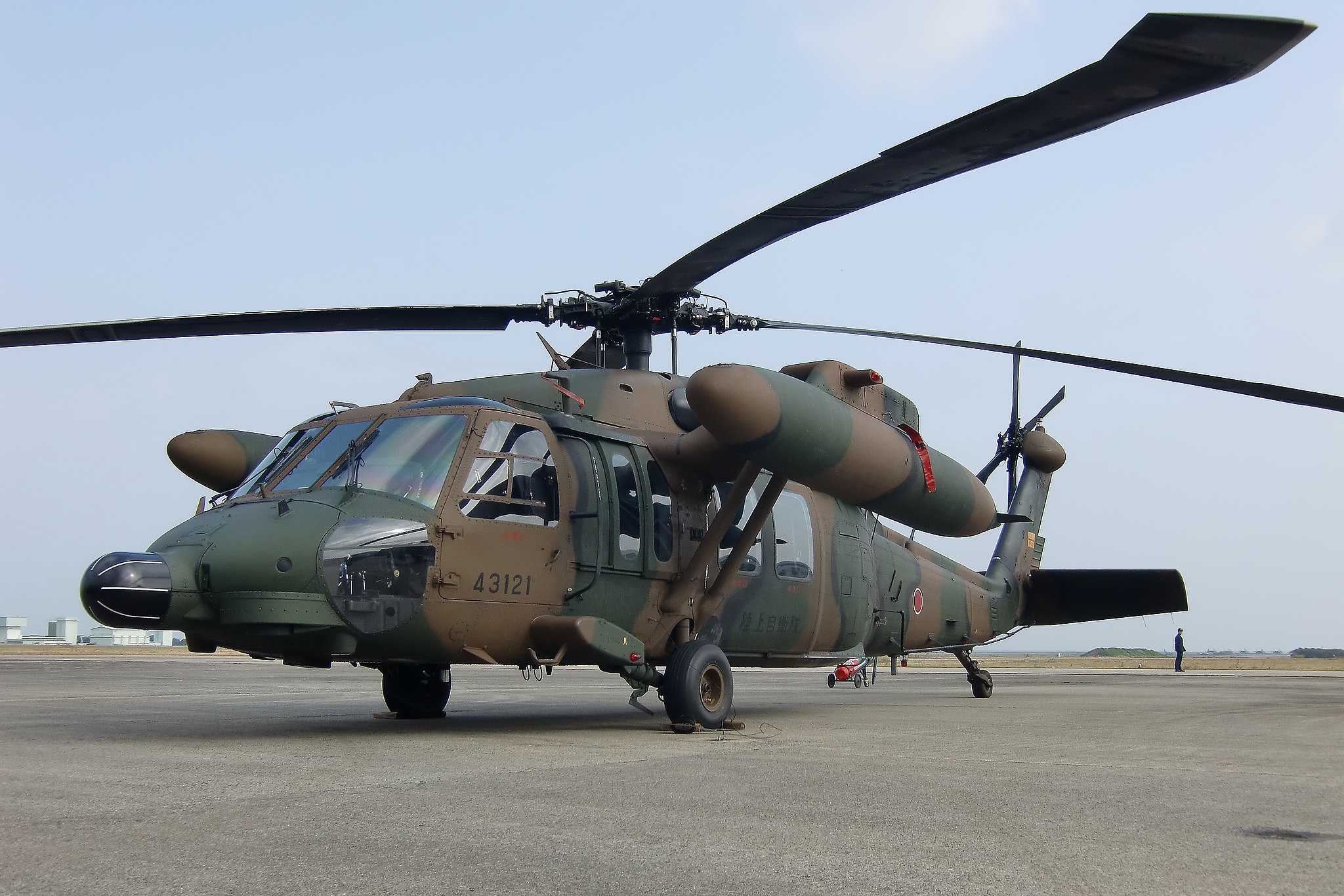Exploring the Technical Advancements Behind the UH-60 Blackhawk
Exploring the Technical Advancements Behind the UH-60 Blackhawk
Blog Article
Learn More About the Versatility of the UH-60 Blackhawk
The UH-60 Blackhawk is an impressive instance of modern-day armed forces engineering, embodying flexibility across a wide array of operational contexts. The innovative avionics and durable capacities of the Blackhawk not just boost its functional effectiveness in difficult settings however also extend its energy in humanitarian efforts.
Background of the UH-60 Blackhawk
The UH-60 Blackhawk, a flexible energy helicopter, was created in the late 1970s by Sikorsky Airplane to meet the united state Army's demand for a modern-day tactical transportation helicopter. This effort arose in action to the restrictions observed in the previous generation of helicopters during the Vietnam Battle. The U.S. Army looked for an airplane that could do a range of missions, consisting of troop transportation, medical evacuation, and logistical assistance, while also showing improved survivability and efficiency.
The Blackhawk was developed with advanced modern technology and engineering, including a twin-engine configuration, a four-bladed blades system, and a robust airframe. Its initial trip happened in 1974, and it was formally introduced right into service in 1979, promptly ending up being a pivotal possession for the united state military. The helicopter's versatility enabled it to be utilized in different combat and altruistic operations, showcasing its effectiveness in varied atmospheres and goals.
Over the decades, the UH-60 has gone through continuous upgrades and adjustments, guaranteeing its importance in contemporary war. Its legacy has actually strengthened its standing as a foundation of military air travel, reflecting a commitment to technology and operational excellence.
Trick Attributes and Specifications
Frequently lauded for its engineering expertise, the UH-60 Blackhawk flaunts a range of essential functions and requirements that enhance its functional abilities. This functional helicopter is powered by 2 General Electric T700-GE-701C engines, each with the ability of creating 1,800 shaft horsepower, allowing it to attain an optimum cruise ship speed of about 150 knots.
The aircraft's distinctive design includes a four-blade primary rotor system and a four-blade tail blades, contributing to superior maneuverability and stability. With a maximum launch weight of 22,000 pounds, the UH-60 can bring as much as 11 soldiers or comparable cargo. Its innovative avionics suite provides boosted situational recognition and navigating, necessary for numerous goal accounts.
The Blackhawk features a durable airframe created from innovative composite materials, offering increased durability and resistance to small arms fire. UH-60 Blackhawk. In addition, the helicopter is equipped with an electronic fly-by-wire control system, boosting responsiveness and minimizing pilot workload. With a series of roughly 600 nautical miles and the capability to operate in diverse environments, the UH-60 Blackhawk remains a crucial property in modern military procedures
Armed Force Applications
With its advanced features and requirements, the UH-60 Blackhawk has come to be a foundation of military operations around the world. Designed for adaptability, it meets a vast variety of roles varying from army transport to clinical evacuation. The helicopter's capability to operate in diverse atmospheres-- whether in battle zone or difficult surfaces-- ensures it continues to be a crucial asset for contemporary army forces.
The UH-60's durable layout enables the transport of approximately 11 troops, supporting quick implementation throughout important missions. Its sophisticated avionics and navigating systems enhance situational recognition, enabling pilots to perform complex operations also in adverse climate condition. In addition, the helicopter is visite site geared up with protective systems to secure against hazards, ensuring the security of employees onboard.

Altruist Missions

Altruistic objectives often depend on the UH-60 Blackhawk for its unrivaled adaptability and fast feedback abilities. This multi-role helicopter has actually proven important in various situations, consisting of disaster relief, clinical emptyings, and logistics sustain in remote or inaccessible locations - UH-60 Blackhawk. Its ability to move workers and products promptly allows for timely treatments throughout dilemmas, dramatically enhancing the efficiency of humanitarian operations
The Blackhawk's sophisticated avionics and durable layout enable it to run in difficult settings, such as damaging climate condition or tough surfaces. Furnished with lifting systems and clinical emptying capabilities, the helicopter can get hurt people from hard-to-reach areas, ensuring timely medical interest. Furthermore, its capacity to rapidly deploy aid materials, consisting of food, water, and crucial equipment, makes it an important possession in massive relief efforts.
Additionally, the UH-60 Blackhawk's versatility enables for different setups tailored to certain goal demands, whether it involves delivering emergency situation responders or delivering vital resources to affected populations. Its functional background in humanitarian missions underscores the airplane's essential function in saving lives and alleviating suffering during natural calamities and altruistic dilemmas, showcasing its enduring dedication to supporting global alleviation initiatives.
Future of the Blackhawk
The future of the UH-60 Blackhawk appears encouraging as innovations in modern technology and advancing mission demands form its ongoing importance in armed forces and civilian procedures. As armed forces around the globe seek visit the website to update their fleets, the Blackhawk is undergoing upgrades that boost its capacities, including boosted avionics, advanced interaction systems, and improved payload capabilities.
The integration of unmanned systems and fabricated knowledge is poised to revolutionize procedures. Future variations may include self-governing trip abilities, permitting for raised operational versatility and reduced danger to employees during high-threat goals. Additionally, hybrid-electric propulsion systems are being checked out to boost fuel performance and reduce the environmental impact of army operations.
International collaborations and export opportunities are also broadening the Blackhawk's international impact. As nations purchase improving their air movement capabilities, the Blackhawk's versatility makes it a positive selection for various roles, from army transportation to clinical evacuation and search-and-rescue operations.
Conclusion
The UH-60 Blackhawk exhibits versatility in army air travel, successfully fulfilling duties varying from troop transport to clinical emptying and reconnaissance. As functional needs develop, the ongoing growth and integration of the Blackhawk will certainly ensure its significance and efficiency in addressing future difficulties in both armed forces and civilian contexts.

With its sophisticated attributes and requirements, the UH-60 Blackhawk has ended up being a foundation of armed forces procedures across the globe. As armed forces approaches evolve, the UH-60 Blackhawk continues to play an important role in boosting operational effectiveness and making sure objective success throughout the theaters of engagement.
Altruistic goals frequently count on the UH-60 Blackhawk for its unmatched adaptability and fast reaction abilities. UH-60 Blackhawk.The UH-60 Blackhawk exhibits adaptability in armed forces air travel, effectively fulfilling duties varying from army transport to medical discharge and reconnaissance
Report this page